Bust of a high-ranking official of the Empire wearing a fringed paludamentum
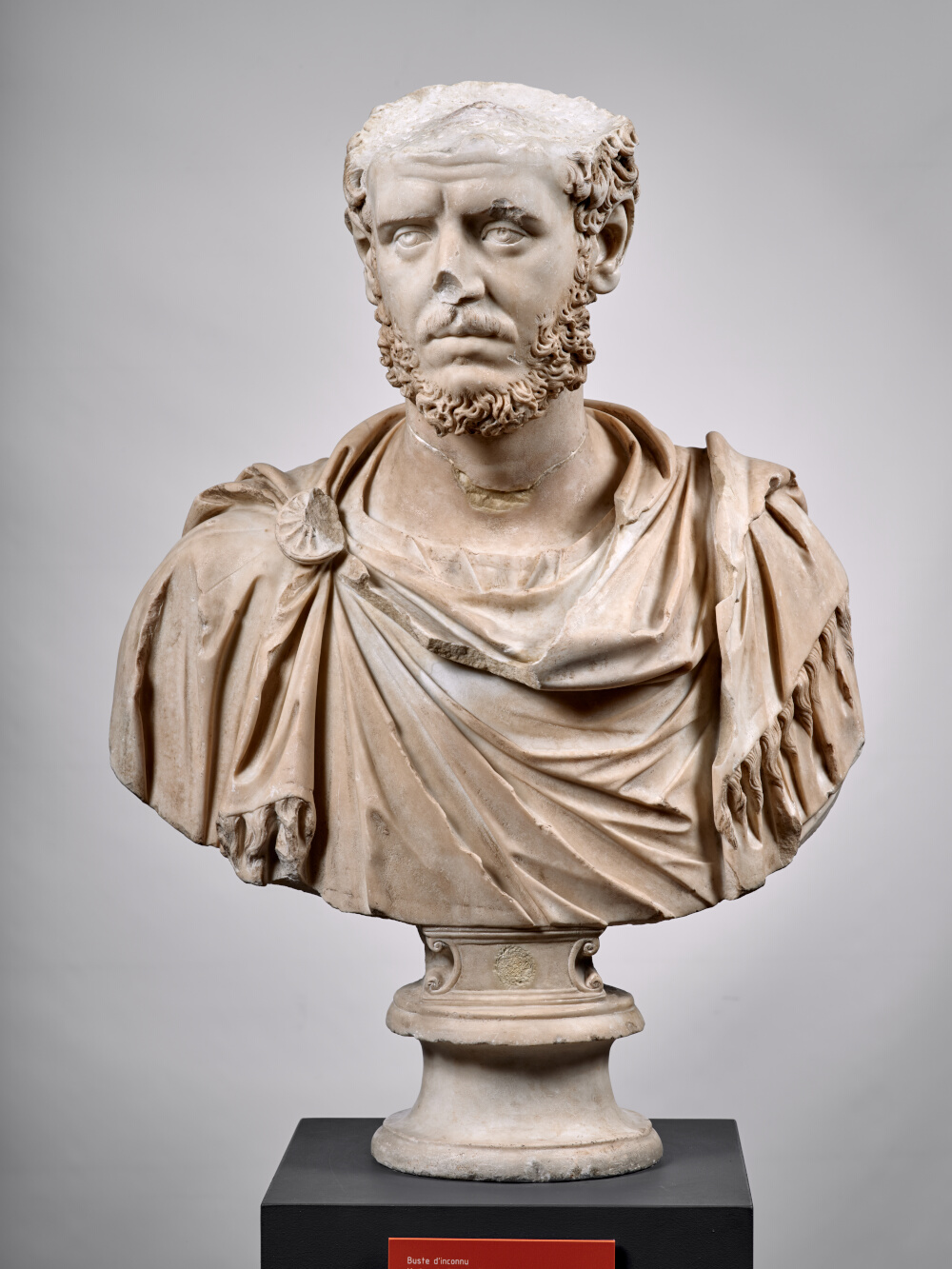
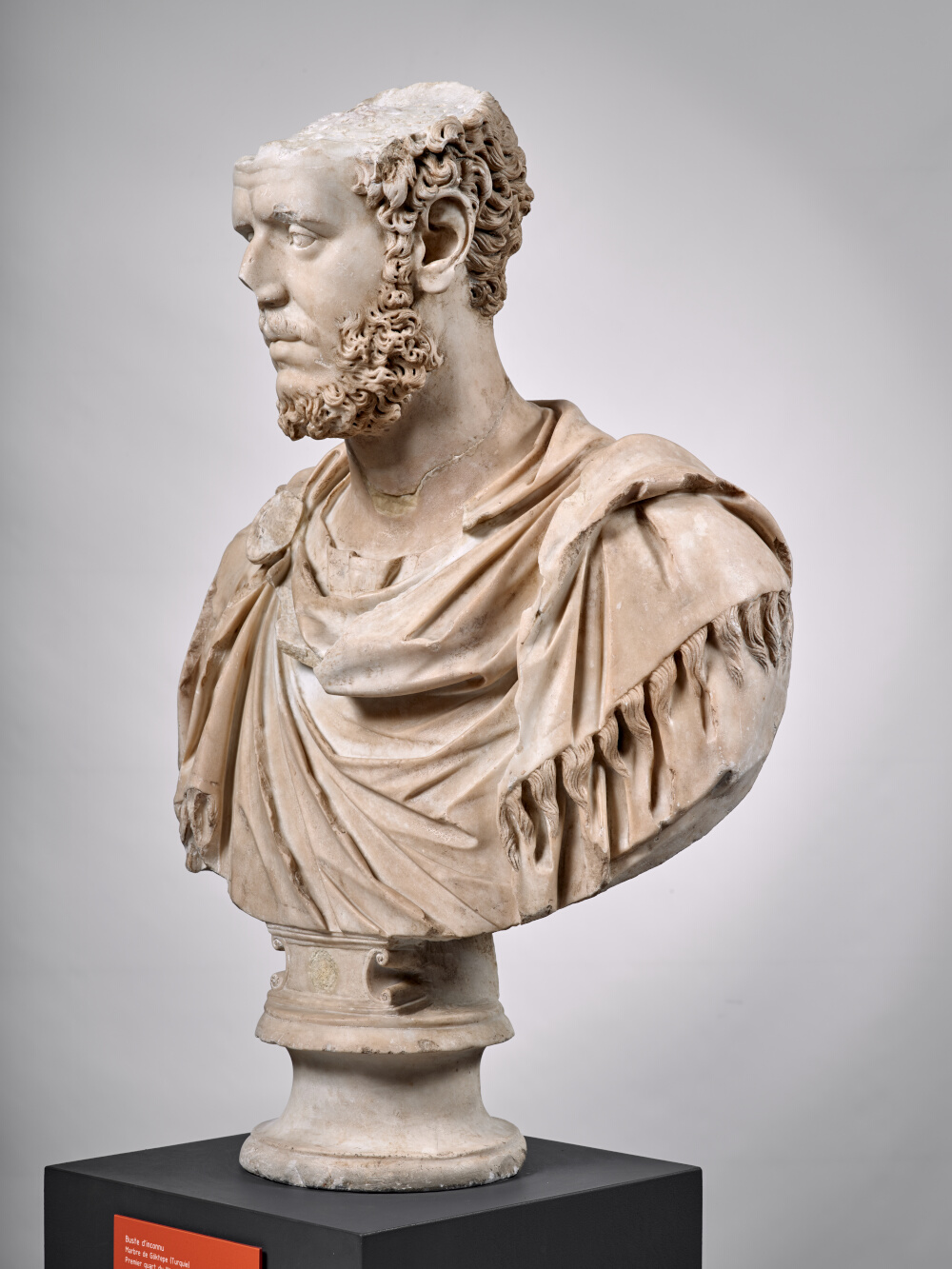
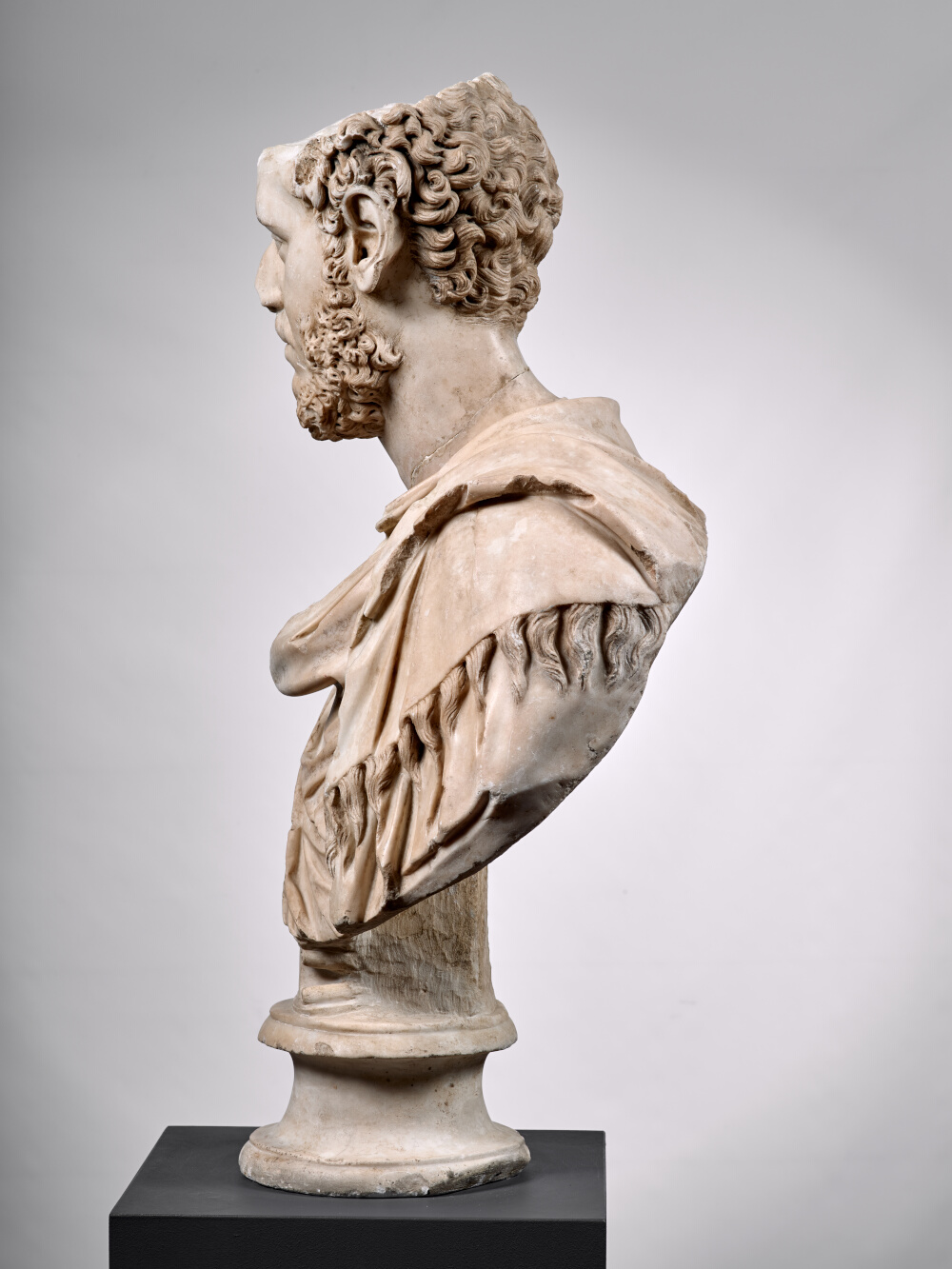
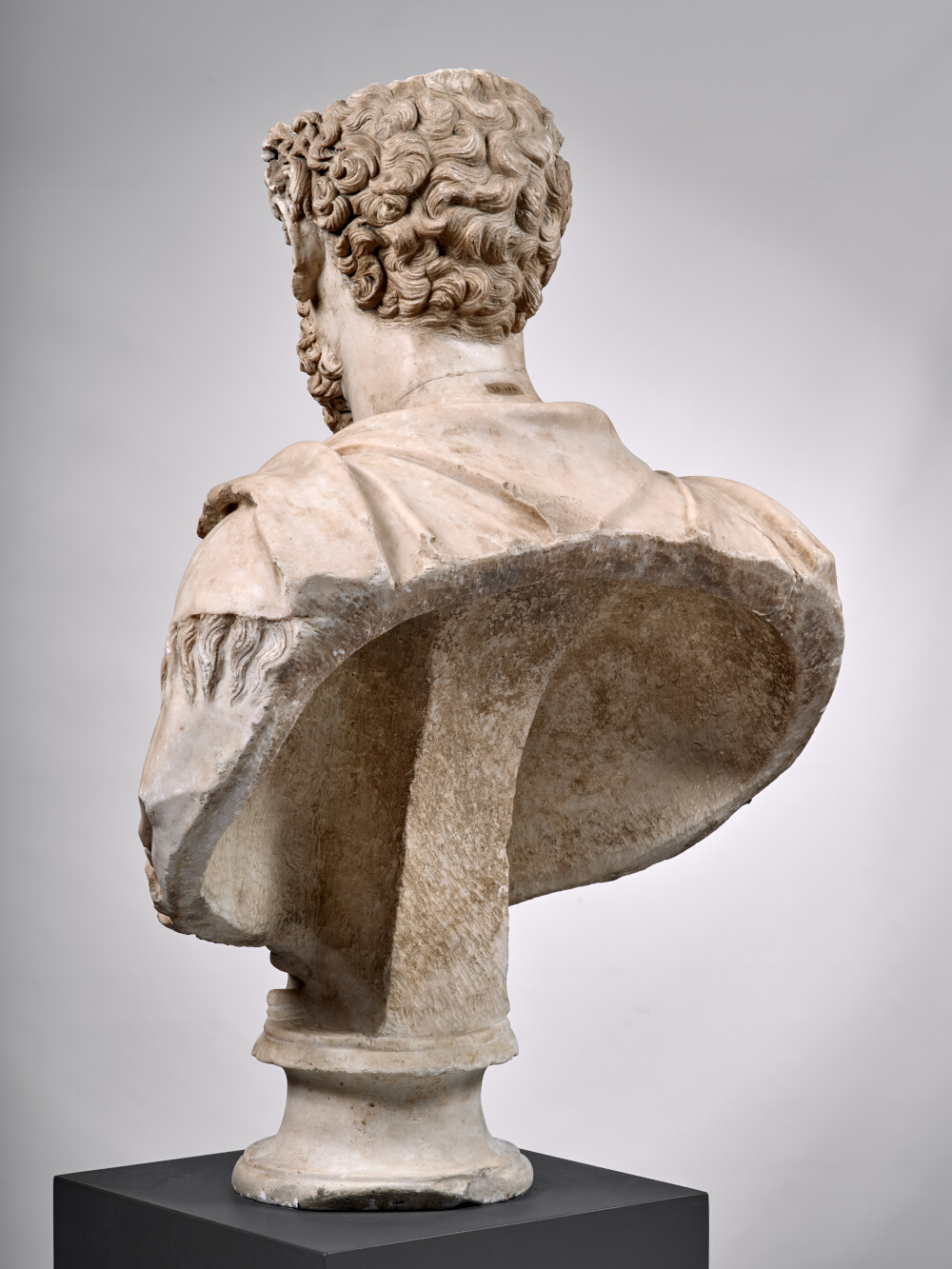
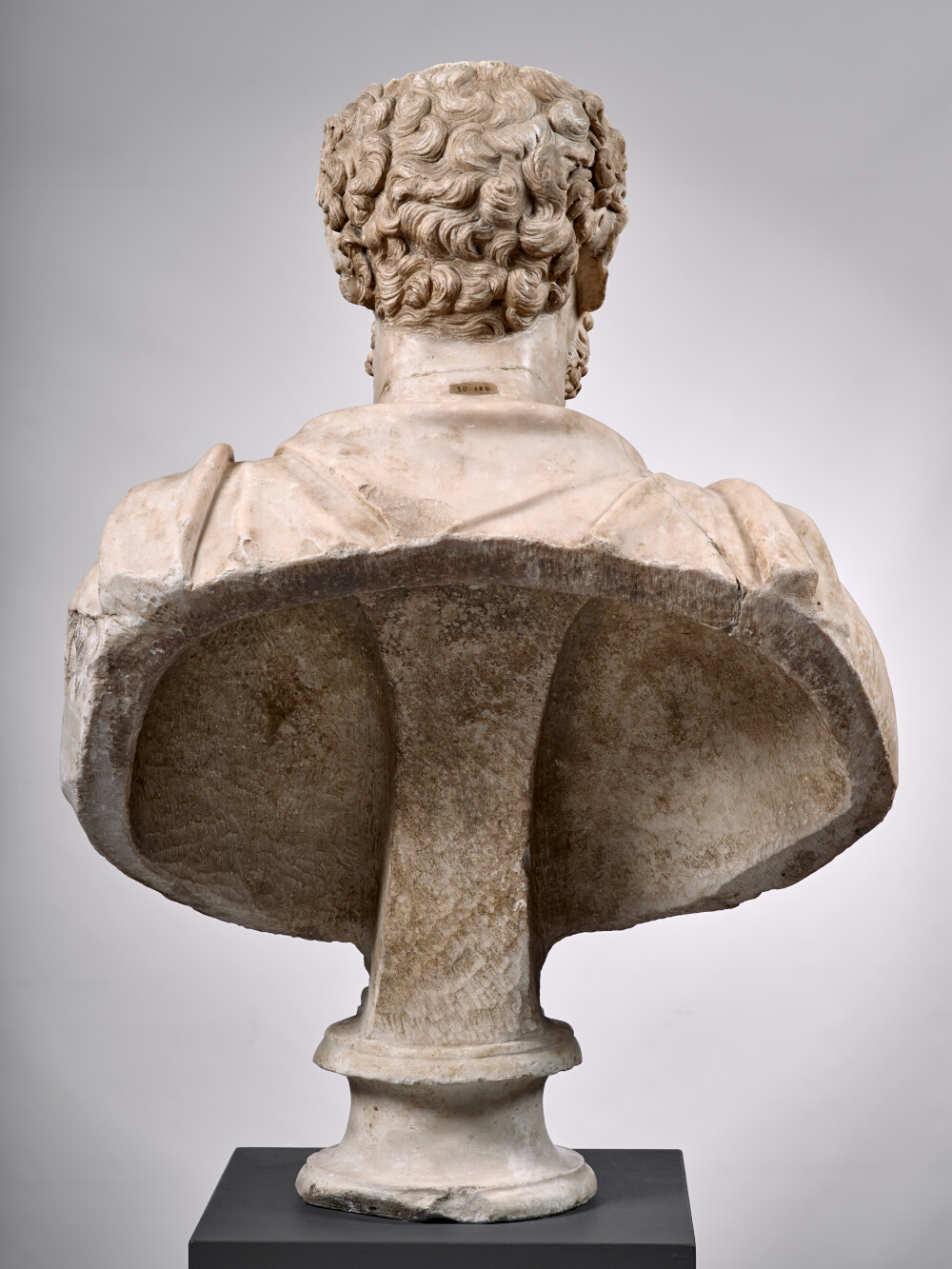
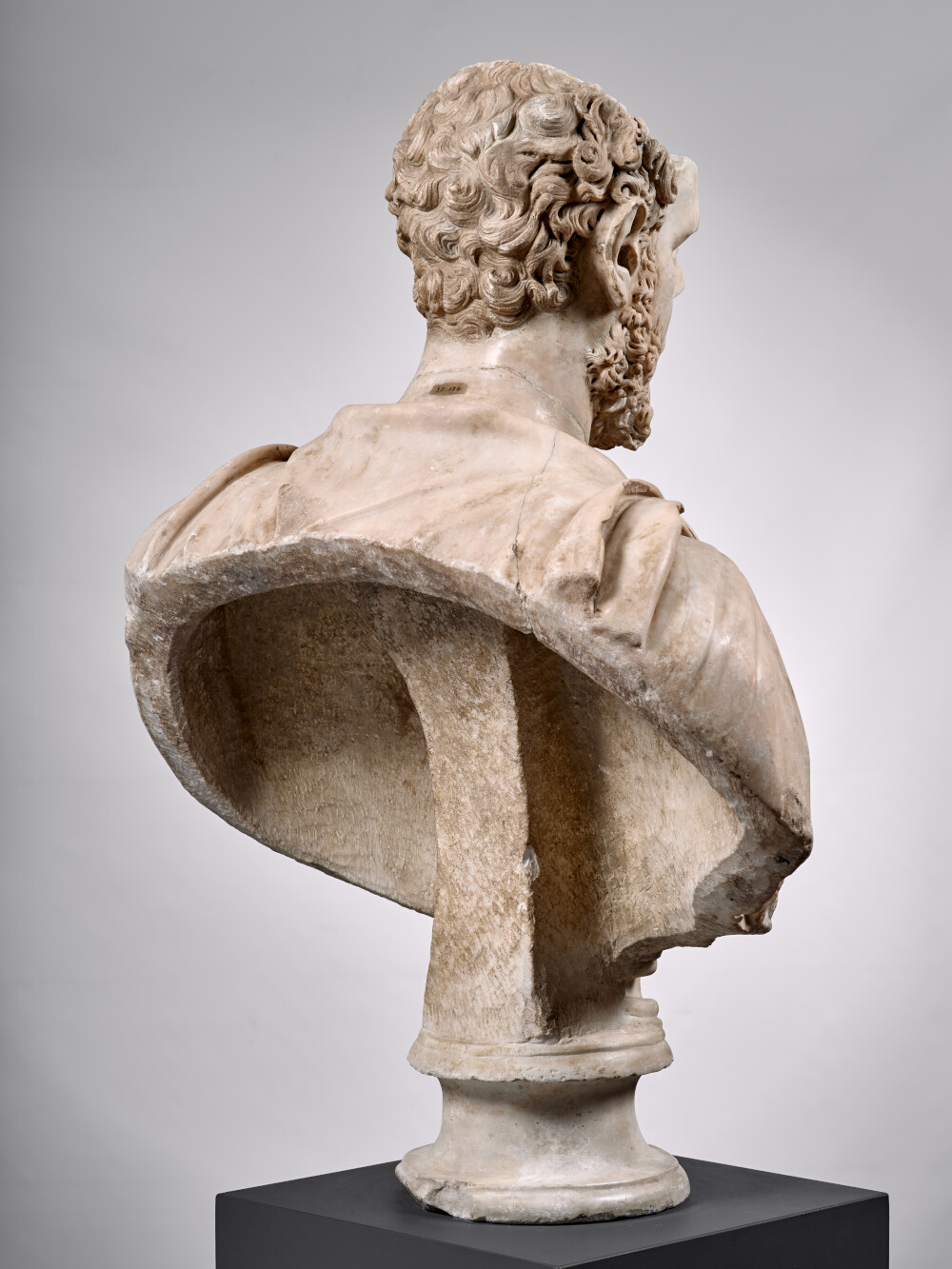
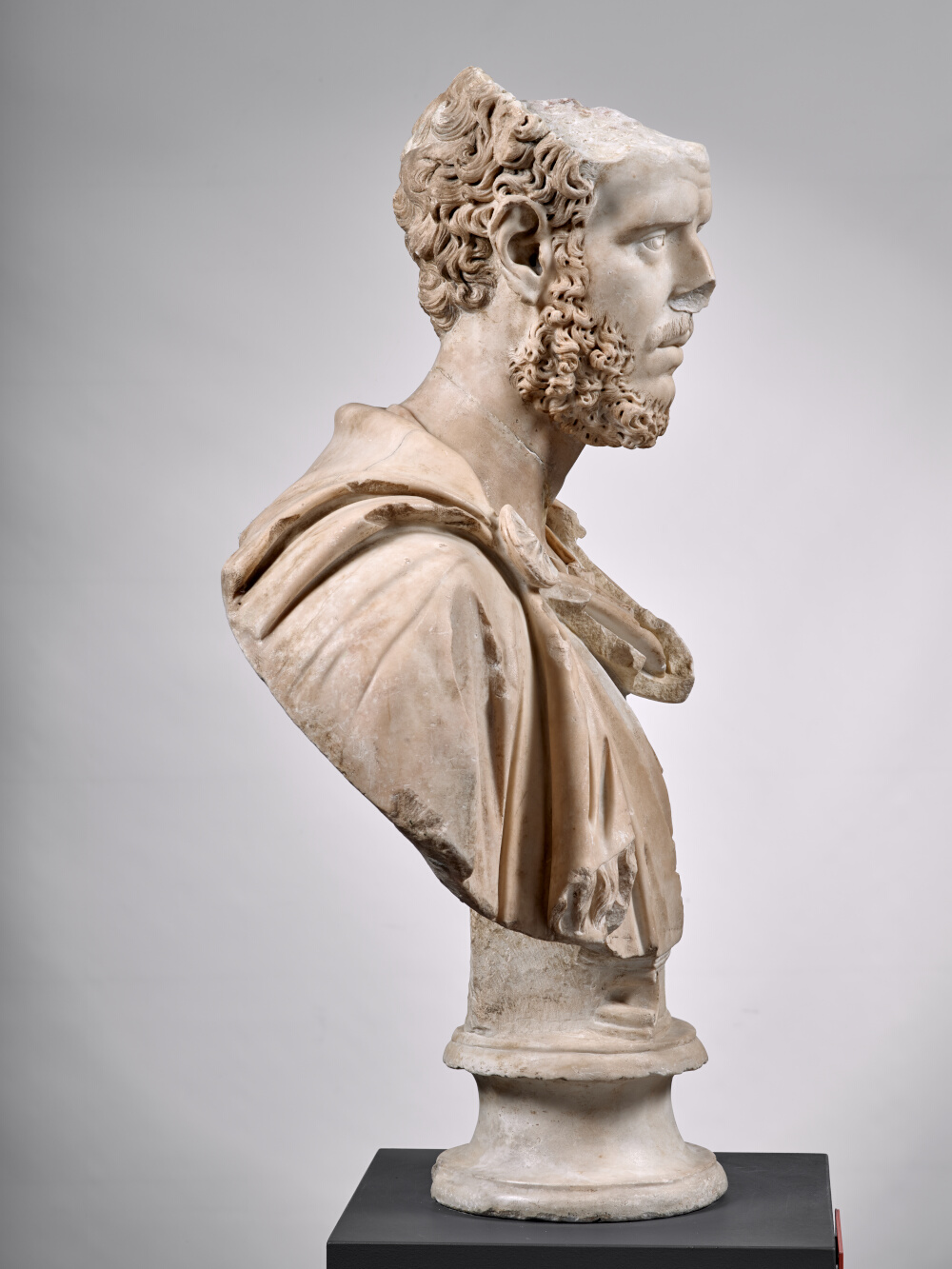
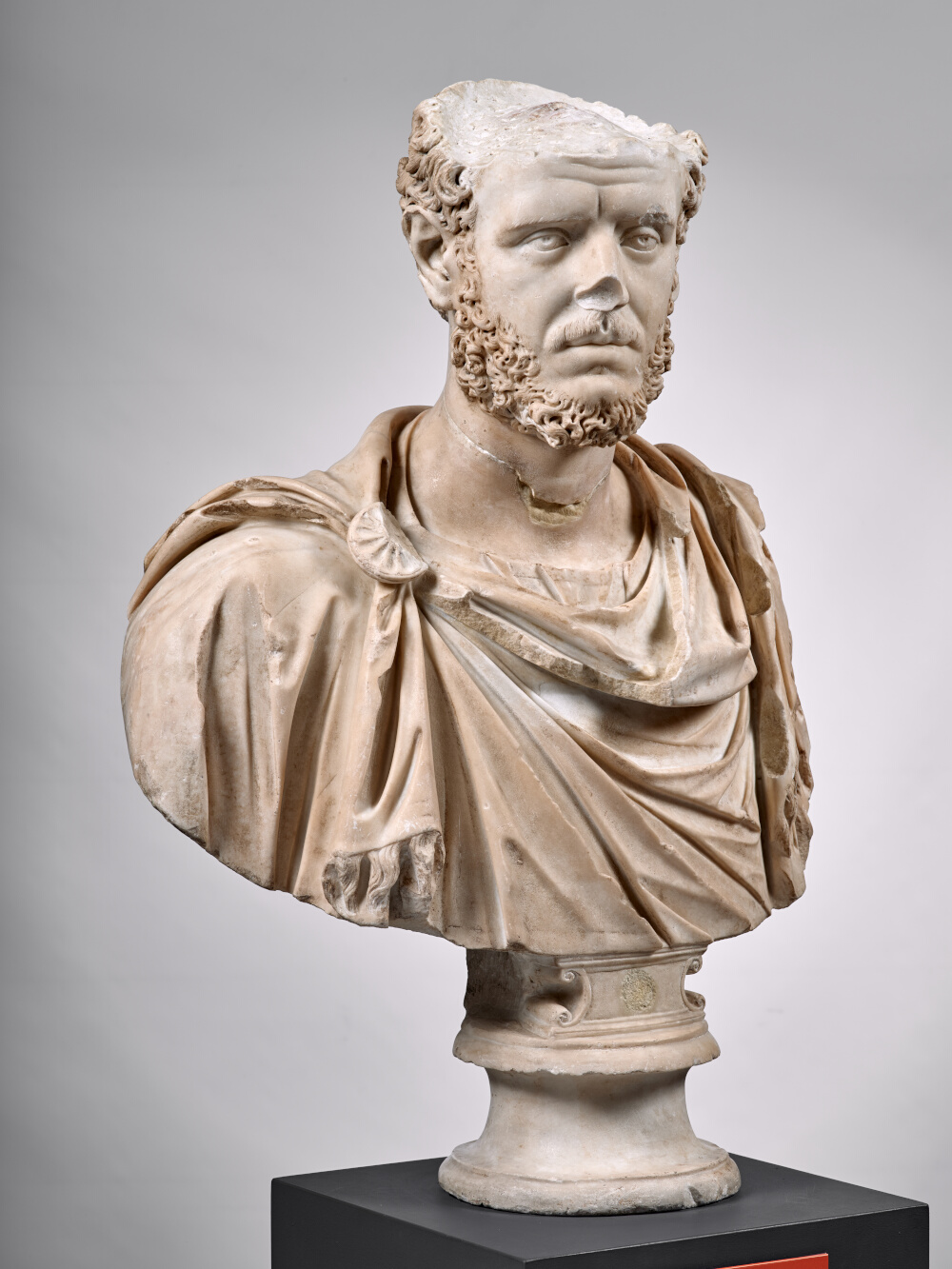
- Date de création
- Late 2\nd\ - Early 3\rd\ century
- Type
- of the "Palazzo Corsini - Toulouse" type
- Material
- Göktepe marble, district 4 (Turkey)
- Dimensions
- H. 82 x l. 58 x P. 34 (cm)
- Inventory number
- Ra 72
- Photo credits
- Daniel Martin
M. Bergmann M. Bergmann, Studien zum römischen Porträt des 3. Jahrhunderts n. Chr. (Antiquitas), Bonn, 1977, n. 104 p. 33. noticed that the bust in Toulouse represented the same person as a statue portrait in the Palazzo Corsini in Rome. This is therefore, yet again, a private portrait of which, by chance, at least two replicas have been preserved. And inscriptions do indeed tell us that the greatest figures of the Empire were honoured with numerous statues and busts, both in the town from whence they came, and in those in which they carried out their administrative duties.
Both works in Rome and Toulouse show absolutely identical characteristics: proportions and facial expression, shape of eyebrows arches, eyes, lips and moustache, and design and volume of the beard, the very aquiline nose, nostrils and nasolabial folds. The only differences are the design and modelling of the locks of hair around the temples and at the back of the skull, and the fact that the ears are completely uncovered in the portrait in Toulouse whereas in the one in Rome the tops of the ears are slightly covered by hair. In Toulouse, these strands of hair have been carved with extreme care, each lock having been made independently from the others, and marked with fine lines using a trepanning tool to give them more substance, whereas those in the Corsini portrait seem banal and « mechanical », as if the sculptor lacked a model for this part of his work, and almost randomly copied the shell-shaped curls found on all the portraits of the Antonine and early Severan dynasties. The appalling carnage perpetrated in Toulouse to the top of the skull for the purpose of attaching plaster hair is all the more regrettable. In this particular point, the Corsini replica is therefore a privileged witness with regard to the fringe at the front, which, like everything else that affected the physiognomy of this portrait, was duty bound to be identical to the model provided.
The large, fringed cloak (paludamentum) is secured above the right shoulder by a large, round, rosette-shaped fibula and covers the entire torso; only the shoulder and the beginning of the right arm are exposed. This type of garment of late Hellenistic origin has been associated with military functions. According to our current documentation, it would seem that the oldest busts covered with a fringed paludamentum date back to the reign of Antoninus Pius. The type of bust that includes a fringed paludamentum worn over a tunic to represent emperors during the reigns of Marcus Aurelius and Lucius Verus, and even Septimius Severus, appears to have been reproduced in private portraiture as early as the Antonine dynasty, and seems to have been very popular at the end of this period as well as at the beginning of Severus’s reign.
It should come as no surprise that a portrait of a high-ranking official, a copy of which is also preserved in collections of antiquities in Rome and Italy, was also unearthed in Chiragan. If the villa in Martres-Tolosane is indeed the imperial domain we believe it is, then, when attempting to identify these portraits, we should be thinking along the lines of the procurators of imperial heritage (patrimonium principis) as well as, perhaps, those who managed the quarries and neighbouring forests on the emperor’s behalf, and were undoubtedly also posted in Chiragan.
According to J.-C. Balty 2020, Les Portraits Romains : L’époque des Sévères, Toulouse, p. 177-190.
Bibliography
- Balty, Cazes 2021 J.-C. Balty, D. Cazes, Les portraits romains, 1 : L’époque des Sévères, 1.3 (Sculptures antiques de Chiragan (Martres-Tolosane), Toulouse. p. 41-44, 177-190
- Bergmann 1977 M. Bergmann, Studien zum römischen Porträt des 3. Jahrhunderts n. Chr. (Antiquitas), Bonn. p.33
- Du Mège 1835 A. Du Mège, Description du musée des Antiques de Toulouse, Toulouse. no 225
- Du Mège 1828 A. Du Mège, Notice des monumens antiques et des objets de sculpture moderne conservés dans le musée de Toulouse, Toulouse. no 140
- Espérandieu 1908 É. Espérandieu, Recueil général des bas-reliefs de la Gaule romaine, 2. Aquitaine, Paris. no 983
- Joulin 1901 L. Joulin, Les établissements gallo-romains de la plaine de Martres-Tolosane, Paris. no 310
- Rachou 1912 H. Rachou, Catalogue des collections de sculpture et d’épigraphie du musée de Toulouse, Toulouse. no 72
- Roschach 1892 E. Roschach, Catalogue des musées archéologiques de la ville de Toulouse : Musée des Augustins, Musée Saint-Raymond, Toulouse. no 72
- Roschach 1865 E. Roschach, Catalogue des antiquités et des objets d’art, Toulouse. p. 36-37, no 72
- Wood 1986 S. Wood, Roman Portrait Sculpture, 217-260 A.D. : The Transformation of an Artistic Tradition (Columbia Studies in the Classical Tradition), Leiden.
To cite this notice
Capus P., "Bust of a high-ranking official of the Empire wearing a fringed paludamentum", in The sculptures of the roman villa of Chiragan, Toulouse, 2019, online <https://villachiragan.saintraymond.toulouse.fr/en/ark:/87276/a_ra_72>.